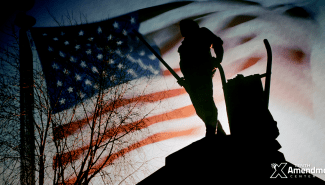
The meaning of “militia” in the Second Amendment
By: Rob Natelson
This is the second article examining contributions to our understanding of the Constitution from the three brand new volumes of the Documentary History of the Ratification of the Constitution of the United States.
My first article observed that probably the greatest contribution of these three new volumes is reproduction, in indexed and easy-to-use hard copy form, of four essays by Tench Coxe.
Coxe was a Pennsylvania businessman, economist, and member of the Confederation Congress who later served as our first assistant secretary of the treasury. During late 1787 and throughout 1788 he wrote a series of essays urging the Constitution’s ratification. Coxe wrote under several pseudonyms, but all four essays in the new volumes were signed “A Pennsylvanian.”
Coxe’s essays were widely popular, and they unquestionably helped reconcile the American people to the new Constitution. Their analysis of the Constitution’s meaning help us reconstruct the original understanding behind the document.
My last article noted how the “Pennsylvanian” essays, particularly the third, explained the limits of federal power. The third also contains information useful for understanding the Second Amendment. That amendment provides that “A well regulated Militia, being necessary to the security of a free State, the right of the people to keep and bear Arms, shall not be infringed.”
Discussion of the right to keep and bear arms was not plentiful during the ratification debates. That is one reason opponents of the individual right to keep and bear arms could maintain for so long that the Second Amendment guarantees only a state power against the federal government. Specifically, opponents argued that the term “militia” refers only to the relatively small body of soldiers actively under arms and supervised by each state.
Advocates of the “individual right” theory countered that during the Founding Era the term “militia” referred to the citizenry generally, or at least to all able-bodied men between certain ages. This position was supported by James Madison’s Federalist No. 46, in which he referred to an American “militia amounting to near half a million of citizens with arms in their hands.” (The number “half a million” approximated the number of able bodied men out of the population of the time.) Alexander Hamilton’s Federalist No. 29 provided some support for the “individual right” interpretation as well.
But still, these writings did not state unequivocately that all able-bodied males were in the militia; to conclude that, one had to make inferences.
However, the writings of Tench Coxe were more direct. In his third “Pennsylvanian” essay he wrote as follows: (Capitalization and italics are his.)
The power of the sword, say the minority of Pennsylvania, is in the hands of Congress. My friends and countrymen, it is not so, for THE POWERS OF THE SWORD ARE IN THE HANDS OF THE YEOMANRY OF AMERICA FROM SIXTEEN TO SIXTY. The militia of these free commonwealths, entitled and accustomed to their arms, when compared with any possible army, must be tremendous and irresistible. Who are the militia? are they not ourselves. Is it feared, then, that we shall turn our arms each man against his own bosom. Congress have no power to disarm the militia. Their swords, and every other terrible implement of the soldier, are the birth-right of an American. What clause in the state or federal constitution hath given away that important right . . . . The unlimited power of the sword is not in the hands of either the federal or state governments, but where I trust in God it will ever remain, in the hands of the people.”
This passage leaves nothing to inference: Coxe states explicitly that the militia consists of every man from 16 to 60 years of age.
Prior to the publication of these new volumes, only a few experts were familiar with this passage. For example, the Independence Institute’s David Kopel, the nation’s leading Second Amendment scholar, published an article 20 years ago that reproduced Coxe’s words. It appeared in Tench Coxe and the Right to Keep and Bear Arms, 1787-1823, 7 Wm. & Mary Bill of Rts J. 347 (1999).
However, publication of these new volumes enables us all to read this passage in accessible form—and in the context of Coxe’s entire essay.